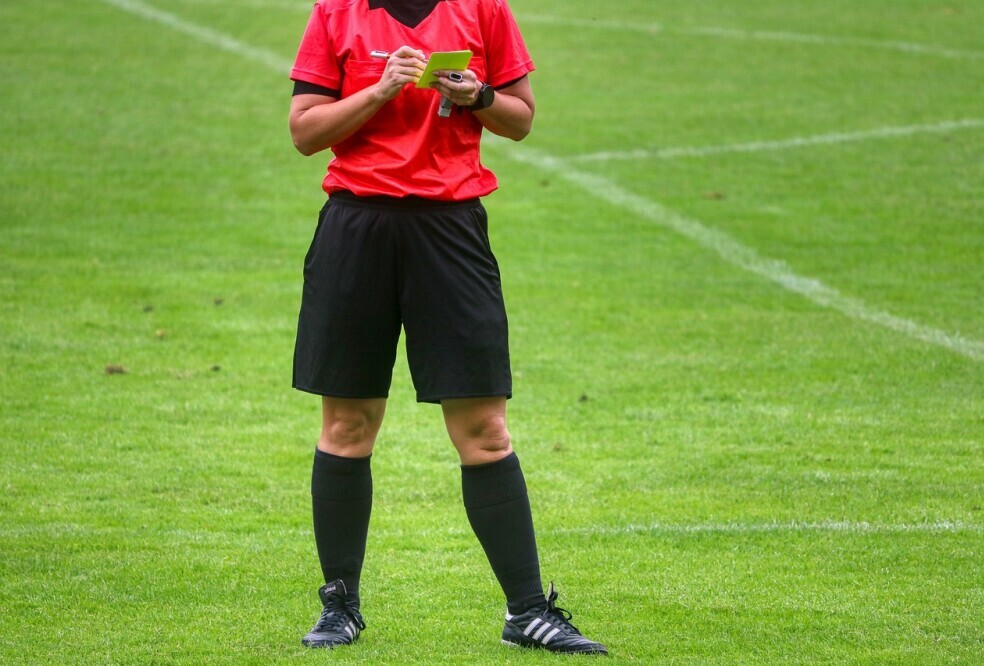
Ah, the offside rule – it’s like the Bermuda Triangle of soccer for a lot of folks. This rule might seem like an enigma, but let’s peel back the layers. Simply put, a player is offside if they’re closer to the opponent’s goal line than both the ball and the second-last opponent when the ball is passed to them, unless they are in their own half. Sound confusing? You’re not alone. Picture this: you’re attending a soccer game, the ball’s zooming towards the goal, but wait – the ref’s flag is up, and the play gets pulled back. That’s offside at work.
Misunderstandings about this rule abound. Some people think any player off the ball who’s closer to the goal is offside, but timing is everything here. The moment the ball is kicked is what’s crucial. Trickier still, being in an offside position isn’t an offense itself. It only matters if they become involved in active play. It’s like hiding in plain sight – until the ball comes your way.
Historically speaking, the offside rule has been around, more or less, since soccer began. It’s evolved significantly though. The original rules, back in the 19th century, were more like rugby’s offside rules. Imagine a game with attackers practically standing by the goalie! Changes were inevitable to preserve the competitive balance of the game.
When it comes to strategies, this rule is a game-changer. Coaches love it as it forces opponents to think smart about their plays. Defenders use the offside trap to their advantage, catching attackers offside with precise teamwork and timing. On the other hand, attackers who master timing and positioning can break defensive lines like pros. So, whether you’re a newcomer to soccer or a seasoned watcher, cracking the offside rule code is key to truly understanding the magic of the game.
The Intricacies of the Back-pass Rule
The back-pass rule – now there’s a sneaky little rule that often flies under the radar but can have huge implications. Basically, a goalkeeper can’t pick up the ball if it’s been deliberately kicked to them by a teammate. It’s one of those rules that keeps the game spontaneous and exciting.
Why does this rule exist anyway? The story goes back to 1992. Before then, teams could pass the ball to their goalkeeper to waste time and slow down the pace of the game. The introduction of this rule meant teams had to be more creative, keeping the game flowing and full of surprises.
Handling back-passes can be a nerve-wracking moment for goalkeepers. They’re already under pressure, and now they’ve got to decide quickly whether to trap the ball with their feet or clear it swiftly before an opponent gets too close. Mistakes here can lead to some memorable blunders or, for the very skilled, showcase a goalie’s adept footwork.
There have been many memorable moments where the back-pass rule’s come into play. Think of instances where a goalkeeper panics and makes a fumble or, conversely, shows off some slick foot skills, clearing the ball just in time. These moments are game-changers.
While the back-pass rule is largely accepted, it doesn’t come without its fair share of controversies and discussions about its effectiveness. There are debates among fans and experts about whether tweaks could make it even better or if it’s perfectly balanced as is. But until then, it continues to add an intriguing layer to the beautiful game.
The Enigma of Indirect Free Kicks
Indirect free kicks often leave fans scratching their heads, especially when they spring up unexpectedly during a game. To make it simple, an indirect free kick is awarded for certain offenses that aren’t quite as severe as those leading to a direct free kick. The twist? The ball has to touch another player before a goal can be scored.
These kicks are signaled by the referee raising an arm. While some may confuse them with direct free kicks, the distinction becomes clear once you spot that lofty arm up in the air. Offenses leading to indirect free kicks can range from dangerous play to an offside infraction where no advantage was gained.
From a tactical standpoint, indirect free kicks are like hidden gems. They offer teams innovative opportunities to create unexpected plays. With rival players often focusing on the potential shooters, teams can surprise them with clever passes or setups for powerful shots from players lingering further back.
Occasionally, indirect free kicks become spotlight moments in matches. Remember when a goalkeeper’s misstep gave away an indirect free kick right in the penalty box, turning the tide of the game? These rare events leave quite an impression and show the importance of understanding every facet of the game.
Unpacking Lesser-known Foul Definitions
In the world of soccer, not all fouls are created equal. There are some rare ones that pop up and leave even the seasoned fans and players furrowing their brows. These uncommon fouls might not make headlines often, but they hold the power to change game dynamics.
Consider the lesser-known ‘impeding the progress of an opponent’ foul. Basically, you’re not allowed to get in the way of another player who is moving with the ball without trying to play it yourself. Sounds straightforward, but in the heat of the match, things can get tricky. Referees, with their hawk eyes, need to make swift judgments on these.
There’s also this peculiarly named foul, ‘charging’, which is different from the ordinary physical contacts we might associate with the sport. If a player uses excessive force while bumping into another to gain an advantage, that’s a direct free kick. Sometimes, this small detail can make a big difference between playing tough and committing a foul.
These kinds of fouls can, and do, influence game results significantly. They test the referee’s expertise, often leading to tense moments on the field where clarity might only come after a thorough discussion or a video replay, where available.
Thoughts on adapting these obscure rules vary. Some argue for clearer definitions or more examples to aid referees, while others feel the beauty of soccer lies in its fluidity and spontaneity, quirks included. Whatever the case, understanding these niche aspects can definitely enhance appreciation for the strategic depth of the game.
